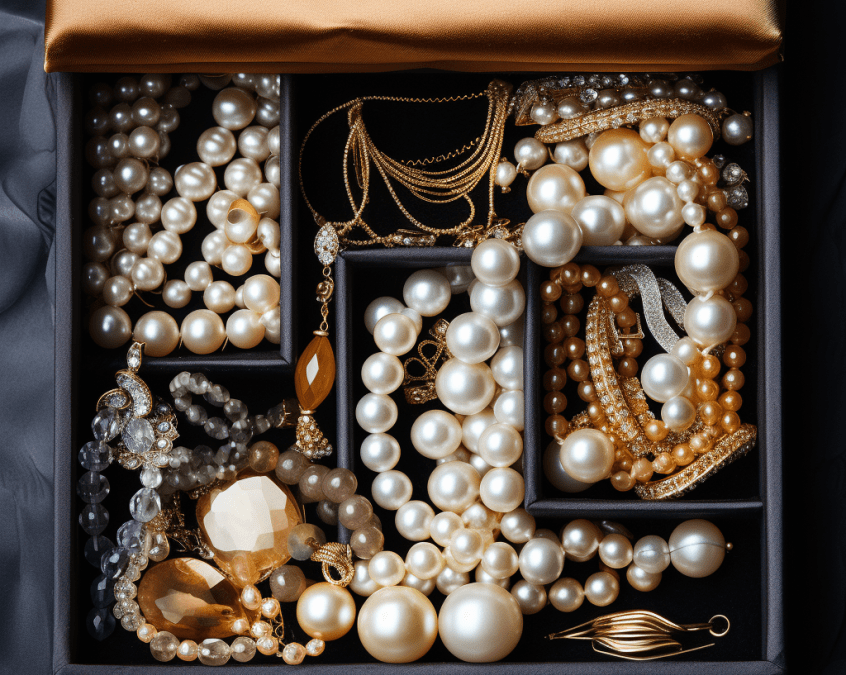Jewelry is more than the final finishing touches of an outfit before heading out the door. Whether you received an heirloom from your grandmother, an engagement ring to symbolize love and commitment to your partner, a new watch, or something to celebrate a milestone – jewelry is a tangible way to connect people back to irreplaceable memories, with sometimes irreplaceable objects. Jewelry insurance offers an extra layer of coverage for these items in your collection – assuring that these special items have the proper protection that they deserve.
Is Jewelry Covered Under My Homeowners Insurance?
A standard homeowners insurance policy may provide some coverage for jewelry repairs or replacements in events like fires. However, these policies typically have a coverage limit of $1,500 for the theft of jewelry, watches, and other precious items. While raising these limits is a possibility to consider, depending on the circumstance, purchasing separate jewelry insurance is advisable.
Ways to Insure Your Jewelry
Aside from the minimal coverage under your homeowners insurance policy, there are two different options we also recommend to secure extra protection for your high-value property.
- Insurance Floaters: Also known as “personal property floater”. This type of insurance covers high-value personal property items beyond the limits of homeowners policies.
- Stand-Alone Policies: These are available from specialty insurers and don’t affect home insurance rates. They may offer broader coverage, including incidents like chipped stones, broken clasps or even partial loss, for example if part of a set of earrings goes missing.
How Much Does Jewelry Insurance Cost?
The cost typically ranges from 1% to 2% of the item’s value annually. For instance, insuring a $10,000 ring might cost between $100 and $200 per year.
The cost of jewelry insurance is a small price to pay for the peace of mind and security it provides.
Is Jewelry Insurance Worth It?
When you are considering purchasing a jewelry insurance policy, consider these questions:
- Can you imagine losing this piece of jewelry?
- In the event something happened to your jewelry, for example it was stolen, lost in a fire, or damaged beyond repair, would you want it replaced?
- How much would you be willing to spend out of pocket to pay for the replacement?
The decision to invest in such insurance should be guided by the value of the jewelry, both in financial and emotional terms, and your willingness to bear the cost of replacement if the unthinkable happens.
Determining the Right Coverage for Jewelry Insurance
The decision to purchase coverage depends on the value of the items that hold significant financial and sentimental value. Separate policies usually cover damage, loss, or theft, but only if the damage results from an incident included in the policy. This can include situations like burglary, accidental loss (losing a ring), and damage due to unforeseen events (a gemstone getting chipped).
Coverage specifics can vary between policies, but generally, it ensures that if something happens to your insured jewelry, you can get it repaired or replaced up to the insured value.
Factors to Consider When Choosing Jewelry Insurance
- Appraised Value of Jewelry: Insurance coverage is often based on the appraised value of each jewelry item. High-value pieces like diamond rings, tennis bracelets or antique jewelry typically require a recent appraisal to establish their worth.
- Type of Coverage: Some policies offer “actual cash value” (reimbursement for the item’s current market value, accounting for depreciation) or “replacement value” (cost to replace the item at current market prices without depreciation).
- Policy Limits and Deductibles: Coverage limits set the maximum amount the insurance will pay. Deductibles, the amount you pay out of pocket before insurance kicks in, can also affect the coverage and premiums.
- Specific Exclusions: Policies may have exclusions that define what is not covered, such as pre-existing damage, wear and tear, intentional damage, or damage due to certain events.
- Additional Floaters: These are add-ons to standard policies for high-value items, offering broader coverage than standard policies.
- Risk Factors: Insurers may consider factors like where you live (if the area has a high theft rate) and how you store and use the jewelry (wearing it daily vs. keeping it in a safe).
- Type of Jewelry: Different types of jewelry, such as engagement rings, heirlooms, or watches, might have different coverage needs and conditions.
Key Tips to Protect Your Jewelry
- Keeping inventory and records of purchases: Filing away receipts, photographing your jewelry and getting proper appraisal are recommended to ensure adequate coverage.
- Proper and Secure Storage: Keeping your jewelry in original boxing for storage or having a secure safe or lockbox can keep your inventory in check and items properly cared for.
- Be Prepared and Travel Smart: Purchasing a less expensive, replica of your more expensive jewelry such as an engagement ring to travel with is a smart way to ensure proper protection, in the event something happens while you’re on vacation.
Let Us Help Protect Your Jewelry
Jewelry serves as more than just an accessory; it embodies cherished memories and emotional connections, often representing significant moments in our lives. Recognizing the irreplaceable value of these items, jewelry insurance serves as an essential layer of protection. We encourage you to take inventory of your jewelry, check on the status of your coverage, and ask yourself – what would you do if something happened to this possession. Would you be properly prepared?


